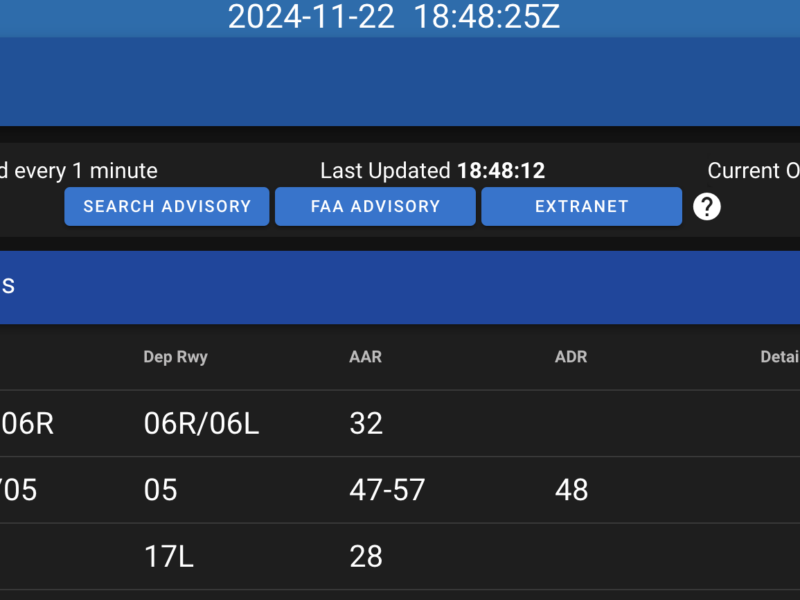Spoke to my FI today to work out plans for the next week or so.
Weather today prevented any flying.. at the windsock the winds were gusting to 22 knots and even at 3000′ the FD was showing 30knots wind. Not to mention the ceiling was low.
Annnnyyyways…
I’m going to write my PPL written Friday morning before I head to Ottawa for the weekend. I called the nearest Transport Canada office and they told me I can come in as early as 8am and no later than 12:30pm. I suspect it wont take me more than 2 hours to write it.
My next flight is booked for Wednesday. If this goes all right then it’s on to the supervisory flight and then the exam! w00t.
I was just going over the passenger briefing requirements and does anyone else think that telling people there is no smoking on a Cessna 172 funny?


It seems funny untill you realize that some people you may fly with in the future who are completely oblivious of GA in general may think its perfectly acceptable to spark one up midflight. A lot of people think that airline-rules don’t apply “in a little plane”.
It also seems silly to have to explain that on a 172 that there are “Two emergency exits, one on each side of the aircraft, which are opened by pulling the silver door latch” but explaining where the exits are (and further to that, exactly how to operate them) is a mandatory part of the preflight briefing with all passengers.
When flying with friends I always start my preflight briefing with a little bit of humour, explaining that although some of what I’m about to explain is surely blatantly obvious, but still needs to be covered regardless. It not only explains to them exactly -why- i’m about to tell them how a simple door handle or seatbelt works, but it helps relax some passengers who may be nervous.
Some of it is incredibly important, such as explaining that the big red know next to the throttle is *not* the heat control, for example. Obvious to you and me, not so much to a cold passenger who associates red knobs with heat controls and may be tempted to pull on it without your permission.
I always go with the mantra of “What seems obvious to you and me isn’t to some people”, especially the less familliar they are with aircraft.
Better safe (and overzealous on the briefing) then sorry.
On commercial airliners, I always appreciate the seatbelt demonstration.
It’s very helpful for anyone that hasn’t been near an automobile since 1975.
Mark,
I agree with you 100%.
I can also see in some cases how the passenger briefing can make people more nervous..
“Why do I need to know where the emergency exits are?”
or
“ELT? are we gonna crash?!”
I never thought to include the “dont touch anything on the panel” in my briefing though…
The seatbelt demonstration and explanation (from another commenter) is also very important despite the fact that it seems obvious to most people. You’ll be very surprised at how many people don’t know how to attach the shoulder belt in a GA aircraft because most are removable from the buckle.
As for the ELT briefing and such, yes it can worry some people, but it must be said – its probably one of the most important parts of the briefing, and your flight test examiner will want to hear every little tidbit about it..location, how to access, description, how to operate, etc.
Again I usually throw in some light hearted humour while explaining the ELT to people, still getting the point across yet still covering what’s necessary in a fashion that’s not going to terrify them. I use the words “Highly unlikely” several times in my briefing, and again stress that I’m only telling them this because I’m required to by law, and its for our mutual safety and well being in the “Highly unlikely” event we need it. ;-)
I also tell my pasengers to not touch *anything* in the aircraft without my express consent. It seems harsh but prevents possible critical issues like my earlier comment on the passenger who may mistake the mixture control for a heat knob.
The preflight briefing is marked very thoroughly on the flight test, so it pays to get it right.
The passenger briefing is an excellent opportunity to set expectations. Humour is good as long as it doesn’t overshadow the fact that passengers really need to know this stuff. When you are on a forced approach and you want the passenger to crack the door before touchdown you probably don’t have time to explain the whole silver handle thing.
Using the the phrase, “In the unlikely event…” seems to help with the ELT, fire extinguisher and emergency stuff (Richard Jenny does an amazing routine about flying and this particular phrase – worth checking out).
The passenger briefing is also a great way to transition from the “walk around and ingress” phase to the “let’s get serious about flying” phase. Once the briefing is done, it is time for checklists, radio calls and a pretty sterile cockpit. The briefing helps to bring this home for the passenger and help them to realize you are about to get pretty focused. I have also found that having passengers help you with the checklist can get them engaged in the flight.
The ashtrays in the circa 1964 – 172’s confuse some people. A friendly reminder is helpful.
Happy flying.
Spanky